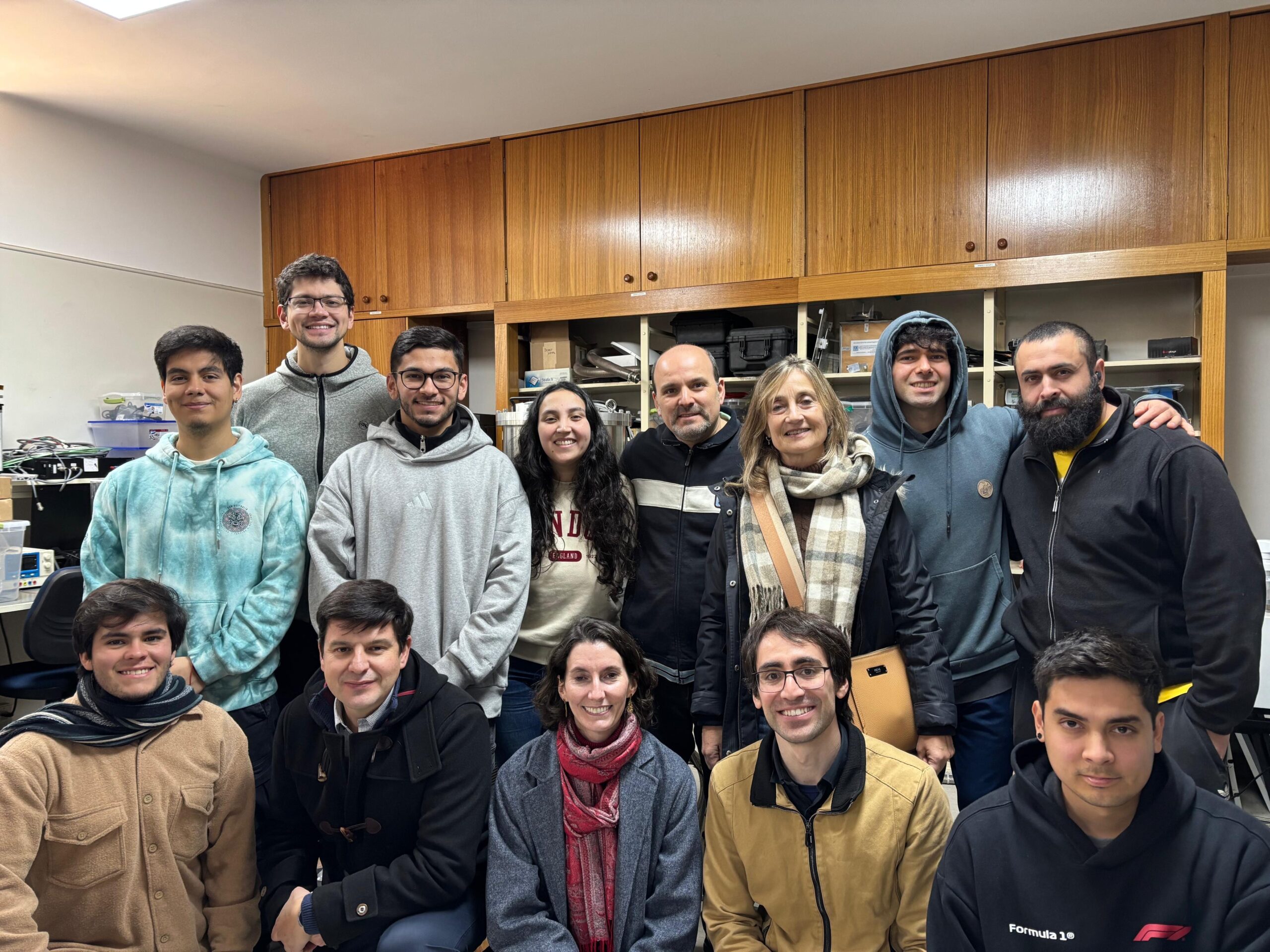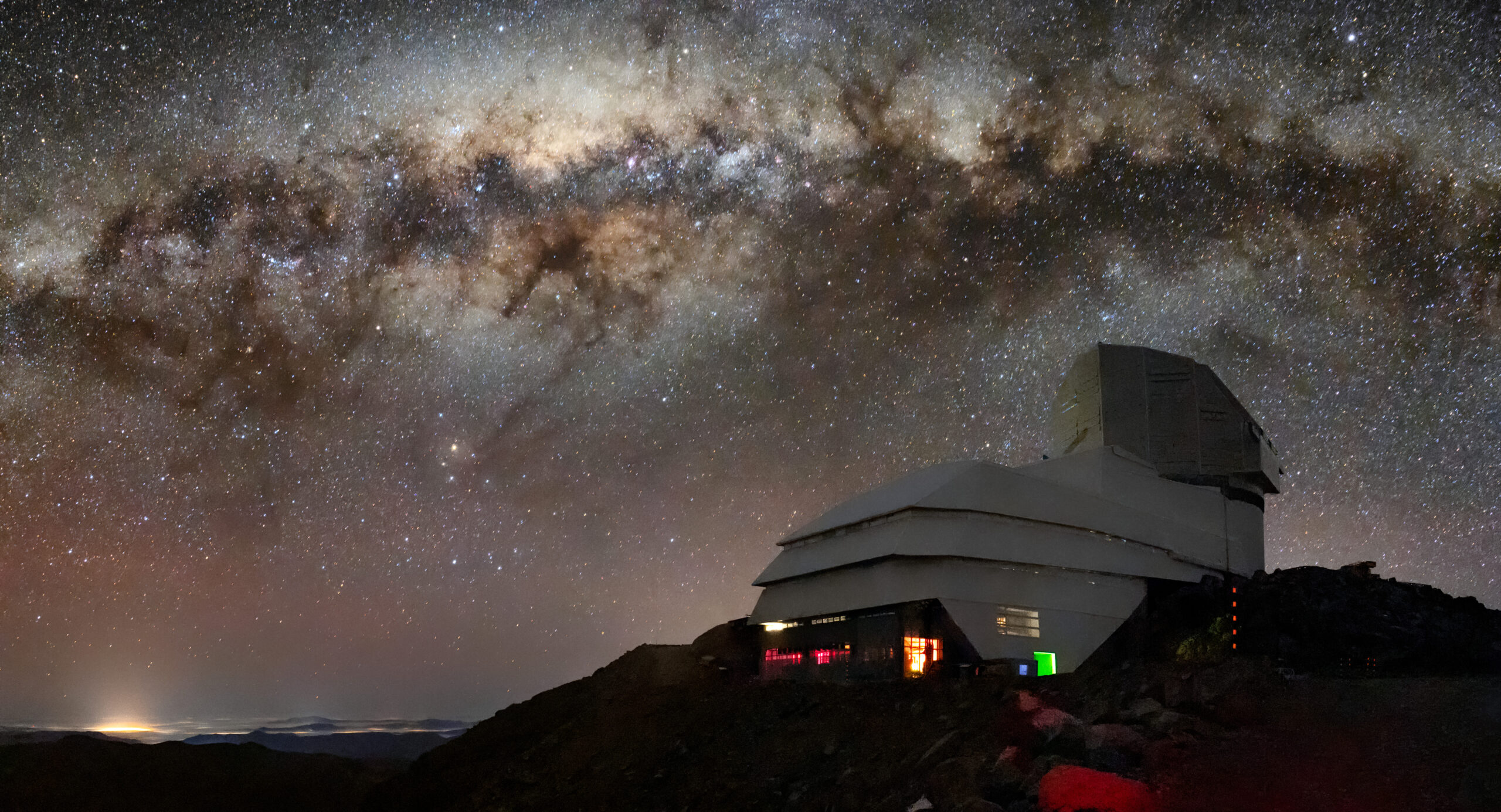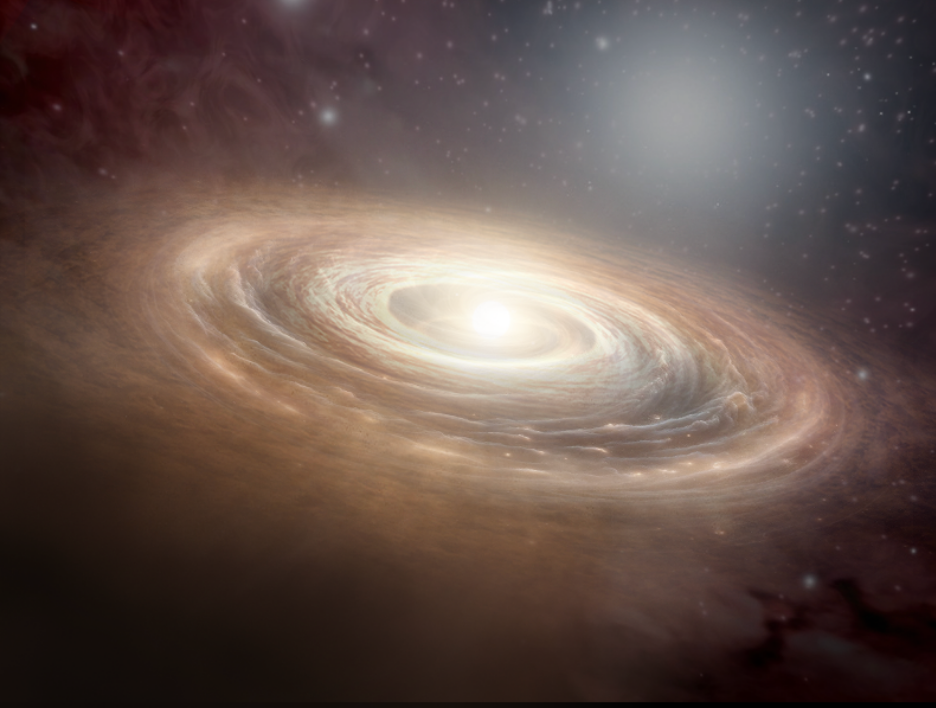
Discovery of the most distant Milky Way-like disk galaxy
It surprised the researchers by its orderly shape, despite being at an early stage in the formation of the Universe. CATA Research Associate Manuel Aravena is part of the team.
The disk galaxy named REBELS-25 could be observed as it was 700 million years ago, 5% of the current age of the Universe, and one of the first peculiarities that the researchers noticed was that it has a very ordered shape, something that is not expected for a galaxy at such an early stage of the cosmos, where it should appear more chaotic, defying the predictions of galaxy formation models.
Moreover, it is the most distant Milky Way-like galaxy discovered so far. And this similarity occurs because both are spiral galaxies and have a dynamically cold disk structure.
This discovery was made by a team with the participation of Manuel Aravena, Associate Researcher of the Center for Astrophysics and Related Technologies CATA, using the Atacama Large Millimeter/submillimeter Array (ALMA).
“Very few galaxies at this great distance have been observed with such high fidelity with ALMA and, therefore, very little is known about how these systems form in the early Universe. Computational simulations and some observations showed that galaxies this early must have been involved in complex and highly dynamic processes, showing irregular shapes and motions, such as when two galaxies merge. However, this study allows us to demonstrate that disks with ordered rotation can form very early in cosmic time, as well as in our Milky Way or in similar spiral galaxies in the local universe”, says Manuel Aravena, also a full professor at the Institute of Astrophysical Studies of the UDP.
This galaxy was also discovered thanks to the large-scale ALMA program called REBELS (Reionization Era Bright Emission Lines Survey), whose development was co-led by Valentino González, also a researcher associated with CATA and an academic at the University of Chile. It is specifically designed to search for and confirm galaxies in the early Universe.
“This study suggests that star formation processes and galactic dynamics could be different from what has been traditionally assumed, as it challenges current models that predict that galaxies in the early Universe should be smaller and less evolved due to intense merger activity and gas turbulence. This could lead to a revision of current paradigms on galaxy formation and the evolution of the interstellar medium,” adds Manuel Aravena.
In this case, the high brightness of the galaxy helped to obtain high sensitivity in the observations, dedicating only ~10 hours. Work and studies with similar detail as this one, using ALMA or even the James Webb Space Telescope (JWST), are only possible in equally bright systems, or by investing several tens or hundreds of hours with these telescopes, which in general is not easy to obtain.
Another interesting aspect of REBELS-25, according to the CATA Associate Astronomer, is that there are “hints” that there may be an elongated central bar. These are commonly seen in local spiral galaxies, and are important for the transport of gas from the spiral arms or disk to its center. Deeper observations may be able to confirm this finding.
This research is presented in a scientific paper entitled “REBELS-25: Discovery of a dynamically cold disc galaxy at z=7.31”, which appears in the journal Monthly Notices of the Royal Astronomical Society.
Recent news
-
 Publicado el: 09/07/2025Patricia Tissera is recognized as full professor by the Pontificia Universidad Católica de Chile
Publicado el: 09/07/2025Patricia Tissera is recognized as full professor by the Pontificia Universidad Católica de Chile -
 Publicado el: 04/07/2025CATA researchers among the best in Chile according to international ranking Research.com
Publicado el: 04/07/2025CATA researchers among the best in Chile according to international ranking Research.com -
 Publicado el: 30/06/2025CATA Director strengthens ties in her second institutional tour
Publicado el: 30/06/2025CATA Director strengthens ties in her second institutional tour -
 Publicado el: 30/06/2025CATA celebrated Asteroid Day 2025 at the Pueblito de Las Vizcachas Park
Publicado el: 30/06/2025CATA celebrated Asteroid Day 2025 at the Pueblito de Las Vizcachas Park -
 Publicado el: 26/06/2025Vera C. Rubin: the telescope that watches the sky and anticipates the future of astronomy
Publicado el: 26/06/2025Vera C. Rubin: the telescope that watches the sky and anticipates the future of astronomy
Categories list
- Acknowledgments 20
- Astrobiology 5
- AstroCluster 1
- Black holes 13
- Corporativo 49
- Cosmology 4
- Descubrimientos 19
- Disclosure 46
- Exoplanets 13
- Extension 4
- Galaxies 17
- Galaxies formation 2
- Inter y Transdisciplina 2
- Local Universe 13
- Publications 5
- Sin categorizar 31
- Solar System 11
- Stellar formation 6
- Technology 9
- Technology Transfer 12


